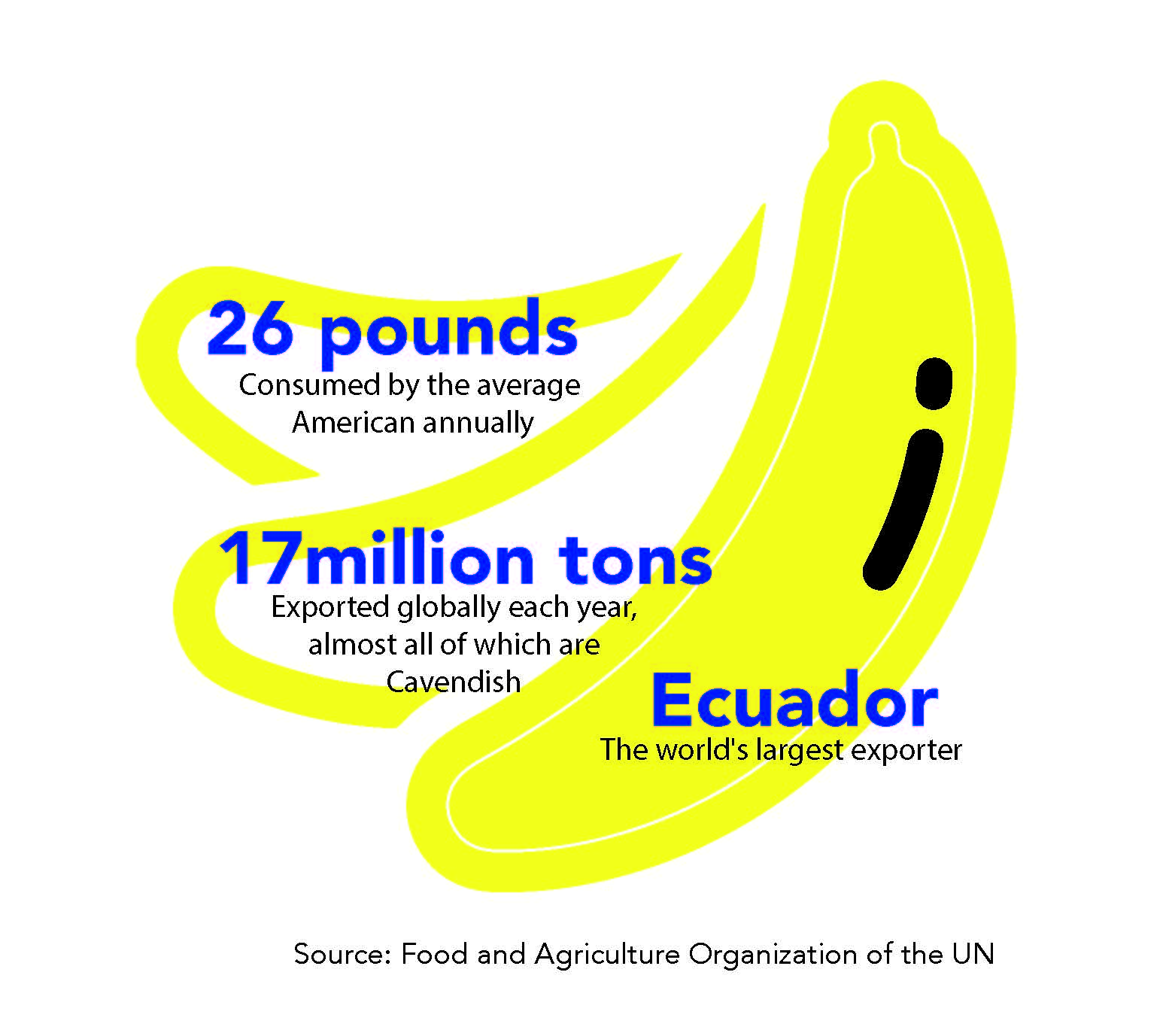![]()
The common Cavendish banana, which is eaten more than apples and oranges combined in the United States, may soon die out due to a global infestation of the Panama disease.
This is not the first time that the Panama disease has killed off a species of bananas. In 1965, a fungus started killing off the Gros Michel commercial banana plants in Central America, according to CNN. It left the producers of the bananas no choice but to burn down all of the plants.
The banana producers started to grow Cavendish bananas instead because they were immune to the fungus. However, a new strain, known as Tropical Race 4, has been found in Australia, Asia, the Middle East and Africa, but has yet to reach the Americas. It spreads through air, water and soil.
This fungus, Fusarium oxysporum f.sp. cubense, is a soil pathogen which infects the root system and colonizes the plant through the vascular system. As a fungus, the disease produces spores, which can survive in the soil for decades.
The disease is uncontrollable, and the only way to cure it is by soil treatments, which have such a detrimental effect on the environment that they are banned almost everywhere, according to panamadisease.org.
Cavendish bananas are clones of the original banana plant. Due to the similar genetic makeup, these plants are extremely vulnerable to disease outbreaks.
There is currently not one banana variety that can replace the Cavendish variety. Since the bananas are genetically modified, breeding is a difficult and long-term task. It may take decades to release new varieties that meet consumer demands.
The leading producers of bananas are Ecuador, Costa Rica, Colombia, Guatemala, Honduras and Panama. Panama disease threatens to cause widespread poverty because bananas are a cash crop for millions of people around the world.
University students from Central America weighed in on the potential impact of losing banana production in their countries.
“There are going to be people unemployed if the sales decrease, but mostly in the countryside and certain provinces, so it is not impacting the entire country,” Victor Jaen Quinn, a student from Panama, said.
While Bananas are Panama’s top agricultural export, services such as banking and transportation account for more than three-quarters of Panama’s Gross Domestic Product, according to Forbes.
In Honduras, where agriculture plays a larger role in the economy, losing banana crops could be more devastating, especially in the northern coast, Jose Ricardo Salinas, a student from Honduras, said.
Student, Alex Paniagua’s family grows bananas in Costa Rica. Even though they grow bananas for personal use and not for profit, he explained that the effect could be more serious for those who rely on banana production for income.
“The Costa Rican Caribbean side’s economy is based mostly on banana production,” said Paniagua. “A decrease in banana production will hugely impact the economy of many Costa Rican Caribbean families.”





